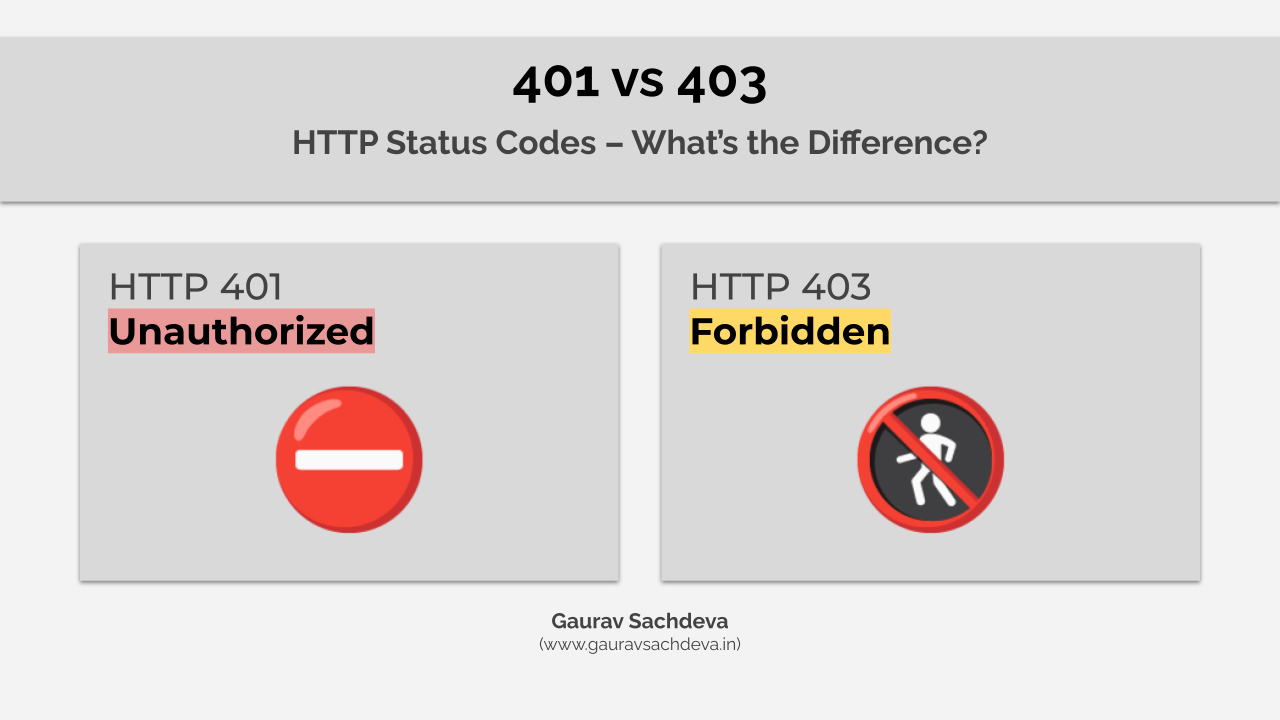401 vs 403 HTTP Status Codes – What’s the Difference?

Introduction
When building web applications or APIs, understanding and correctly using HTTP status codes is crucial for ensuring proper communication between clients and servers. 401 (Unauthorized) and 403 (Forbidden) are two commonly confused status codes. Though they may seem similar, they serve distinct purposes. In this article, we’ll explore the differences between the two and when to use each one.
What is a 401 Unauthorized Error?
The 401 Unauthorized status code indicates that the client request has not been completed because it lacks valid authentication credentials for the target resource.
Key Characteristics of 401:
- Authentication Failure: The client has not provided the necessary credentials or the credentials are invalid.
- Challenge for Credentials: Servers typically respond with a
WWW-Authenticateheader, indicating that the client needs to authenticate itself to access the resource. - Common Usage: It is used when the resource is protected by some form of authentication (e.g., an API key, OAuth token, etc.).
Example: A user tries to access a restricted page without being logged in. The server responds with a 401 status, asking them to log in first.
What is a 403 Forbidden Error?
The 403 Forbidden status code means that the server has understood the request, but refuses to authorize it. Unlike the 401 status, providing valid credentials will not grant access.
Key Characteristics of 403:
- Permission Denied: The client is authenticated, but does not have permission to access the requested resource.
- No Additional Authentication Prompt: Unlike 401, the server does not prompt for any additional credentials because it knows the current user is unauthorized.
- Common Usage: It is used when the server wishes to hide the existence of the resource from the client or deny access based on permission levels.
Example: A logged-in user attempts to access a resource or page that their account role does not have the necessary permissions to view. The server returns a 403 error.
Key Differences Between 401 and 403
| 401 Unauthorized | 403 Forbidden |
|---|---|
| Lack of valid authentication. | Authentication is provided but access is denied. |
| Client can attempt to provide credentials again. | No credentials will grant access. |
Often includes a WWW-Authenticate header to prompt the client for authentication. | No WWW-Authenticate header is included. |
| Typical scenario: Login required. | Typical scenario: Insufficient permissions. |
When to Use 401 vs. 403?
- Use 401: When the client needs to authenticate to access the resource, but hasn’t yet provided valid credentials. Example: Unauthenticated API request.
- Use 403: When the client is authenticated, but lacks the necessary permissions to access the resource. Example: A user logged into an admin dashboard but without admin privileges.
Conclusion
While both 401 Unauthorized and 403 Forbidden are often related to access control, they serve different roles. 401 is for missing or incorrect authentication, while 403 is for insufficient permissions despite being authenticated. Understanding the distinction between these two status codes helps create more robust and user-friendly applications.